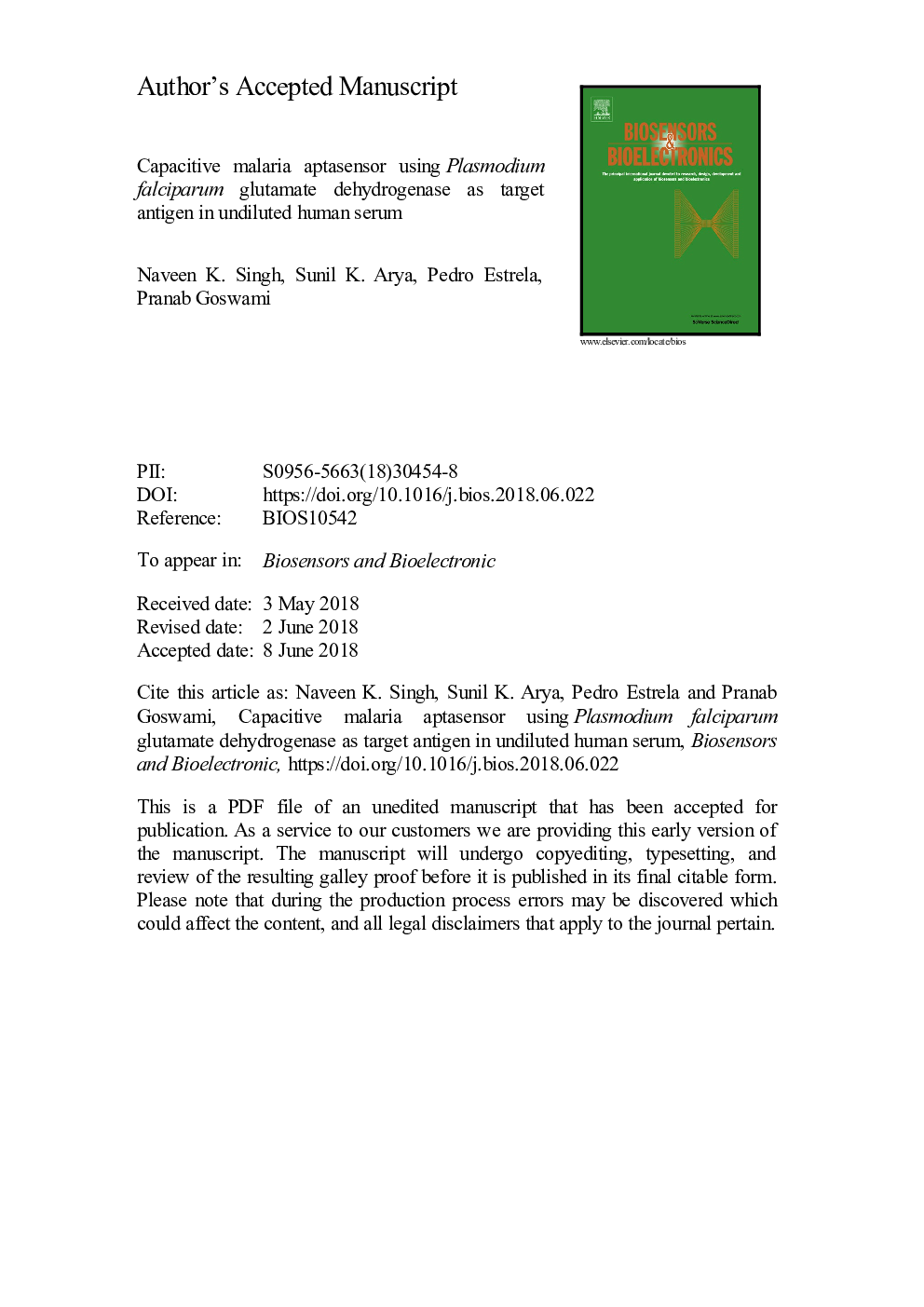| Article ID | Journal | Published Year | Pages | File Type |
|---|---|---|---|---|
| 7229024 | Biosensors and Bioelectronics | 2018 | 21 Pages |
Abstract
A capacitive aptasensor for detecting the malaria biomarker, Plasmodium falciparum glutamate dehydrogenase (PfGDH), directly in human serum samples developed. A thiolated ssDNA aptamer (NG3) that binds specifically to PfGDH antigen with high affinity (Kd= 79â¯nM) was used to develop the aptasensor. The aptasensor produced capacitance response at an optimized frequency of 2â¯Hz in a non-Faradaic electrochemical impedance based signal transduction platform. The aptasensor exhibited a wide dynamic range of 100â¯fMâ100â¯nM with a limits of detection of 0.77â¯pM in serum samples. The interference from other predominant malarial biomarkers, namely, Plasmodium falciparum -lactate dehydrogenase and -histidine rich protein-II on the aptasensor was negligible. This PfGDH aptasensor with highly sensitive and label free detection capability has great application potential for diagnosis of asymptotic malaria and monitoring the regression of malaria during treatment regime with antimalarial drugs.
Related Topics
Physical Sciences and Engineering
Chemistry
Analytical Chemistry
Authors
Naveen K. Singh, Sunil K. Arya, Pedro Estrela, Pranab Goswami,
